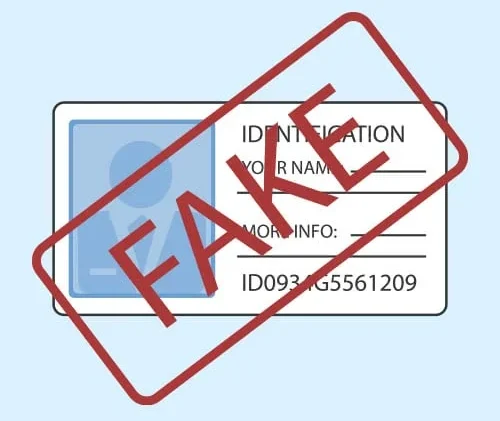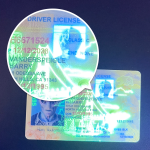Shifting Standards: What’s New in Driver License Design This Year
Driver licenses remain a cornerstone of personal identification across the U.S., serving purposes beyond driving—from age verification to boarding domestic flights. As technology advances and security threats evolve, state agencies are reimagining license templates to balance functionality, security, and user needs. 2024 brings notable shifts in how these critical documents are structured, protected, and accessed.
1. Advanced Security Measures to Combat Forgery
Counterfeit license production has long plagued law enforcement, with fake IDs used in everything from underage drinking to identity theft. In 2024, states are rolling out templates with layered security features that are harder to replicate. For example:
- Nanotechnology Inks: Tiny metallic particles embedded in ink react to light, creating color shifts visible only under specific angles. These inks are nearly impossible to duplicate with standard printing equipment.
- Dynamic QR Codes: Unlike static codes, these generate new data every 30 seconds, linking to encrypted state databases. Scanning them reveals real-time validity checks, preventing clones from using outdated info.
- Biometric Watermarks: Some states (e.g., Florida) are testing watermarks that incorporate a holder’s unique traits, such as a fingerprint outline, visible under UV light but not to the naked eye.
These upgrades aren’t just about blocking forgers—they also streamline verification for businesses. A bartender checking an ID, for instance, can now use a mobile scanner to confirm a QR code’s validity in seconds, reducing wait times and errors.
2. The Rise of Digital Licenses: Merging Physical and Virtual
Digital driver licenses (DDLs) have transitioned from pilot programs to mainstream adoption. By 2024, over 30 states offer or plan to launch mobile versions, stored in apps like Apple Wallet or Google Pay. Key features of these digital templates include:

Multi-Layered Access Controls: To prevent unauthorized use, DDLs require biometric authentication (face ID, fingerprint) or a PIN each time they’re accessed. Some apps even disable the license if the phone is reported stolen, automatically notifying state DMVs.
Partial Data Sharing: Users can choose what info to display. For example, when buying alcohol, only age and name might be shared, keeping address and license number private. This addresses privacy concerns that stalled earlier DDL rollouts.
Cross-State Recognition: States like Arizona and Georgia have agreements allowing law enforcement in neighboring states to scan DDLs via secure portals. This reduces confusion during traffic stops or emergencies, especially for frequent travelers.
3. State-Specific Aesthetics: Balancing Uniformity and Identity
While federal REAL ID standards mandate core security elements (e.g., machine-readable zones, birthdate placement), states are leveraging 2024 templates to highlight local culture. Examples include:
- California: Incorporates the state’s iconic redwood trees and surfboards in background patterns, replacing the previous generic landscape design.
- Louisiana: Features a jazz note motif and Mardi Gras colors, aligning with the state’s cultural heritage.
- Colorado: Uses a gradient of mountain peak silhouettes, reflecting its outdoor-focused identity.
These design choices don’t just make licenses more visually distinct—they also foster a sense of pride among residents. A 2023 survey by the National Governors Association found that 68% of respondents felt “more connected to their state” after receiving a redesigned license.

4. Accessibility Improvements for Diverse Users
2024 templates prioritize inclusivity, addressing needs of users with disabilities. Key updates include:
High-Contrast Color Schemes: States like New York and Texas now offer licenses with bold black text on yellow or orange backgrounds, improving readability for those with color blindness or low vision.
Large-Print Options: Font sizes for critical info (name, expiration date) have increased by 2 points, making details clearer for older adults. Some states even provide magnifying strips with the license for on-the-spot reading.
Braille Inserts: A pilot program in Massachusetts adds small Braille dots along the license’s edge, indicating key details like “valid” or “expired” for visually impaired users.
5. Environmental Considerations in Material Choices
As sustainability gains focus, several states are rethinking license materials. California, for example, has switched to 100% recycled polycarbonate, reducing plastic waste by 40% annually. Oregon uses plant-based bioplastics that decompose faster in landfills. These changes don’t affect durability—tests show recycled materials last just as long as traditional ones, with no impact on security features.

Common Questions About 2024 License Templates
Q1: Do I need to replace my current license with the 2024 template?
A: No, most states are phasing in new templates as existing licenses expire. If your license is valid beyond 2024, you’ll keep it until renewal. Check your state DMV website for exact timelines.
Q2: Are digital licenses accepted everywhere?
A: Adoption varies by business and state. As of 2024, major chains (e.g., Walmart, CVS) accept DDLs in participating states, but smaller businesses may still prefer physical IDs. Always carry a physical license as a backup when traveling to non-participating areas.
Q3: How do I update my info on a digital license?
A: Changes (e.g., address, name) must be made through your state’s DMV portal. Once updated, the digital license syncs automatically within 24 hours. Physical licenses will arrive by mail in 7–10 business days.
Q4: Can someone steal my digital license if they take my phone?
A: No, because DDLs require biometric or PIN access. Even if a phone is stolen, the thief can’t view or use the license without the owner’s fingerprint or face scan. Some apps also lock after 3 failed attempts, requiring a DMV reset.
Q5: Are the new security features visible to the public?
A: Some are (e.g., color-shifting inks, QR codes), while others (e.g., nanotechnology, biometric watermarks) require special tools to detect. This dual approach ensures both casual and professional verifiers can check validity.


